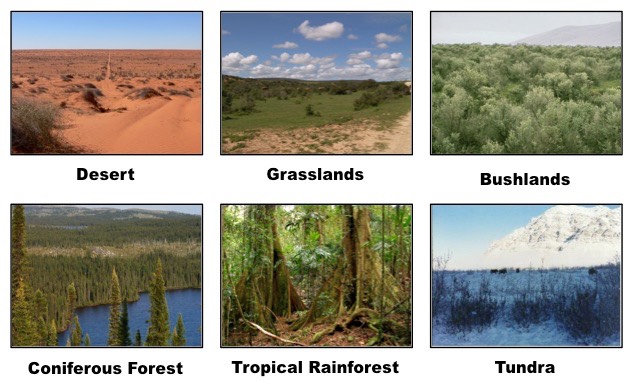G.2.1 Define gross production, net production and biomass
Gross Production: The amount of organic matter (biomass) produced by plants
Net Production: The amount of organic matter produced by plants minus what is needed for plant respiration
Biomass: The total dry organic matter of living organisms or ecosystems
G.2.2 Calculate values for gross production and net production using the equation: gross production – respiration = net production

G.2.3 Discuss the difficulties of classifying organisms in higher trophic levels
There are a number of reasons why it may be difficult to classify organisms in higher trophic levels:
- Organisms may fit into more than one trophic level (as seen in food webs)
- Omnivores consume organisms from all levels of the food chain (plants and animals)
- There may be seasonal changes in trophic level depending on availability of food supplies
- Some organisms may alter their diet over the course of their life cycle (e.g. some amphibians)
G.2.4 Explain the small biomass and low numbers of organisms in higher trophic levels
- Energy transfer along a food chain is less that 100% efficient (~10% of energy is transferred between trophic levels)
- The remainder is lost as heat, used up in respiration, excreted (as faeces or urine) or simply not consumed
- Nutrient transfer is also less than 100% efficient between trophic levels
- Consequently, there is a reduced total amount of biomass available to higher order consumers (resulting in small biomass at these levels)
- Higher order consumers need to hunt prey to survive, adding an extra energy cost to the feeding process
- Because predators need to consumer larger quantities of prey to derive sufficient energy, more competition exists – resulting in lower numbers
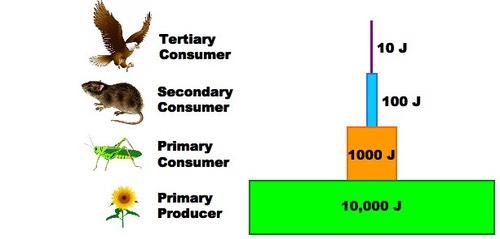
G.2.5 Construct a pyramid of energy, given appropriate information
- A pyramid of energy is a graphical representation of the amount of energy of each tropic level in a food chain
- They are expressed in units of energy per area per time (e.g. kJ m2 year -1)
- Pyramids of energy will never appear inverted as some of the energy stored in one source is always lost when transferred to the next source
- This is an application of the second law of thermodynamics
- Each level of the pyramid of energy should be approximately one tenth the size of the level preceding it, as energy transformations are ~10% efficient
G.2.6 Distinguish between primary and secondary succession, using an example of each
Ecological succession describes the process by which a sequence of increasingly complex communities develop over time
- The climax community is reached when succession has ended and the community has all of its characteristics
Primary Succession
- Occurs when succession starts on entirely new land without any established soil – this may occur at river deltas, sand dunes or on exposed rock
- As the organisms which first colonise a region (pioneer community) die and decompose, they establish a layer of soil for future organisms to utilise
- On exposed rock, lichen and moss may initally colonise the area and provide a layer of soil for seeds to germinate, increasing species diversity
Secondary Succession
- Occurs when succession starts on existing soil following a natural or artificial upheaval of the primary succession
- Secondary succession occurs when the existing biota is removed from soil that is already formed – such as following a bushfire or earthquake
- During secondary succession, dominance is usually achieved by the fastest growing plants
Summary of Primary versus Secondary Succession

G.2.7 Outline the changes in species diversity and production during primary succession
- Species diversity will increase as primary succession proceeds
- Only a few species (lichen and moss) are capable of living in environments that have never sustained life before (pioneer species)
- As these species alter the environment, it becomes more habitable, leading to a larger diversity of species colonising the region
- Production – an increase in biomass or available energy – will also increase as primary succession proceeds
- In early succession, there are few plants, so gross production and net production are low
- As the number and density of plant species increases with more soil, productivity also becomes greater
G.2.8 Explain the effects of living organisms on the abiotic environment, with reference to the changes occurring during primary succession
- Primary succession begins on new land, with pioneer species breaking down substrate to create organic soil
- As plant species colonise the area, the litter produced by their growth and their decomposing remains will cause the following changes:
- Will increase soil depth (adds humus to soil)
- Will increase soil mineral content (and break down rock through root growth)
- Will aerate soil and alter the soil pH
- Will improve soil water retention and reduce draining
- This will allow for the growth of larger plants, which will provide shade and reduce erosion through the binding action of their roots
Summary of Changes During Primary Succession
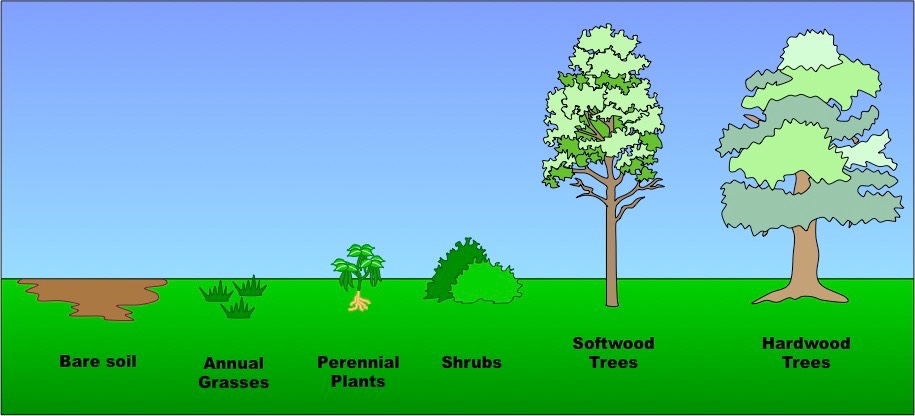
G.2.9 Distinguish between biome and biosphere
Biome: A geographical area that has a particular climate and sustains a specific community of plants and animals (i.e. a type of ecosystem)
Biosphere: The total of all areas where living things are found (i.e. the totality of biomes)
G.2.10 Explain how rainfall and temperature affect the distribution of biomes
- The main factors affecting the distribution of biomes is temperature and rainfall
- These factors will vary according to latitude and longitude, elevation and proximity to the sea
- Temperature is influential because it affects the rate of metabolism – the phases in the life cycles of many organisms are temperature dependent
- In the same way, the availability of fresh water (both in the soil and in rivers and lakes) is critical to the growth and nutrition of organisms
- Rainfall and warmer temperatures are more common near the equator and less common at the poles
Distribution of Biomes
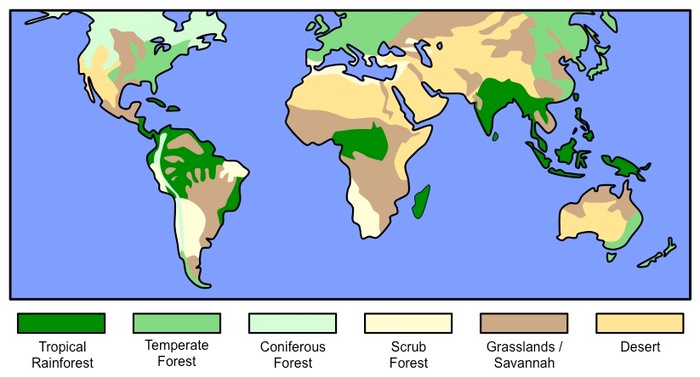
G.2.11 Outline the characteristics of six major biomes
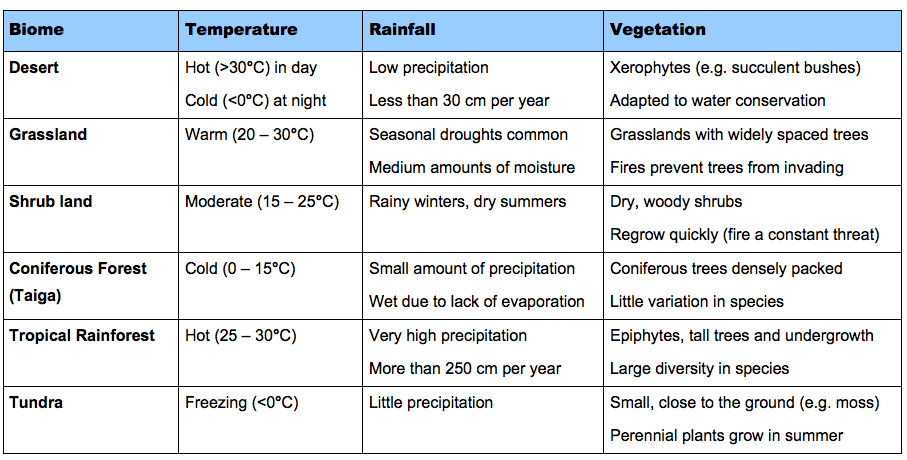
Different Types of Biomes
